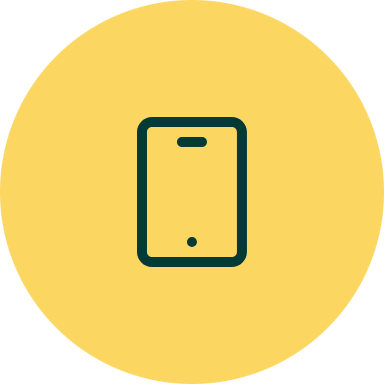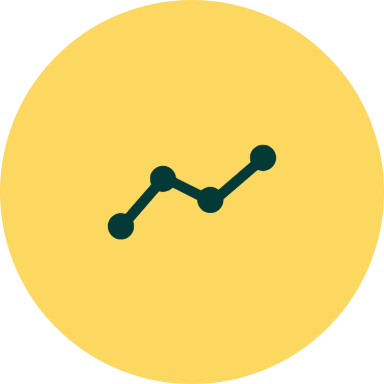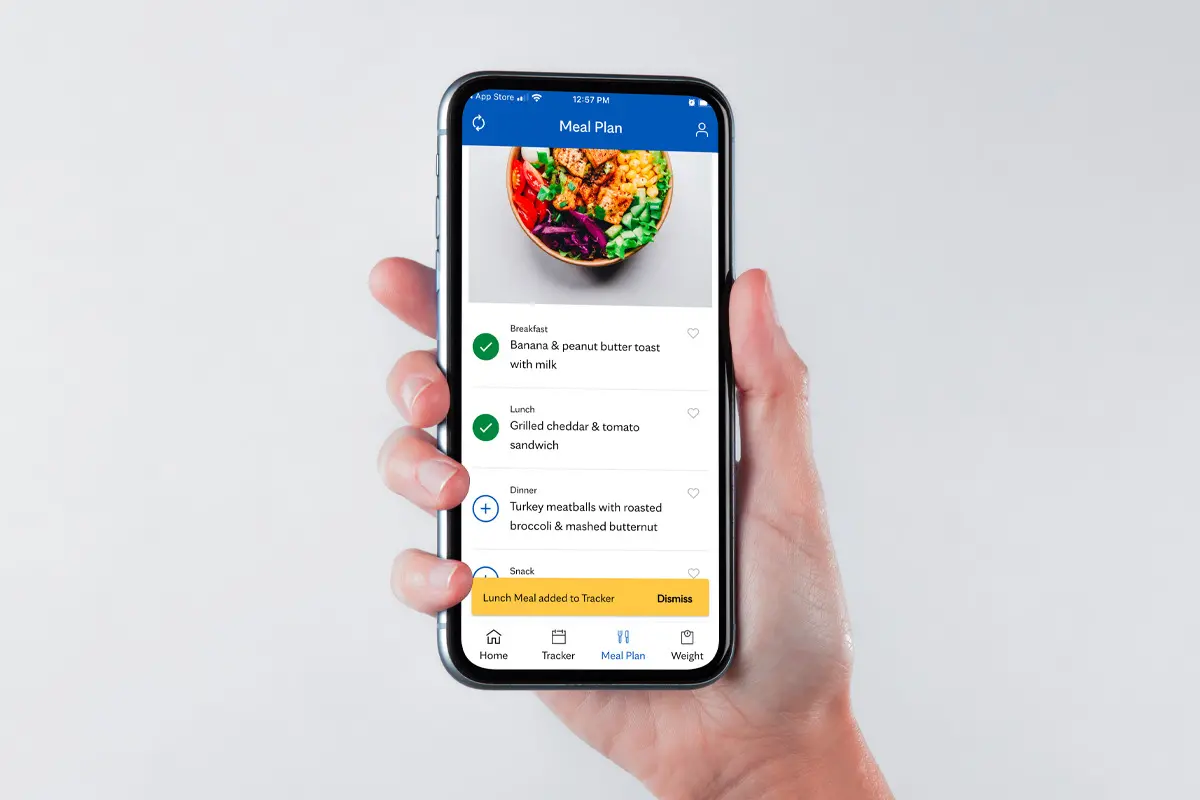Table of Contents
These products & services are researched and tested by HelpGuide’s independent consumer reviews partner. When you buy through the links, we earn a commission.
In the past two decades, obesity has become increasingly common in America. According to the Centers for Disease Control and Prevention (CDC), 41.9 percent of American adults were obese in 2020, up from 30.5 percent in 2000. Obesity is associated with costly conditions like diabetes, heart disease, and cancer, as well as a range of psychosocial conditions such as depression and anxiety.
Bringing your weight into a healthy range can lower your risk of all those conditions and improve your quality of life. But making permanent changes to eating and exercise habits is easier said than done—and weight loss programs can either help or hinder your progress.
That’s why our Handbook Team has researched and tested a number of programs to find out the strengths and weaknesses of each one. We’re here to provide unbiased information so you can make a knowledgeable decision for lasting health.
Find the best weight loss program that’s right for you
- Best for beginners: Mayo Clinic Diet
- Best for support on a weight loss journey: Noom
We also give insights into two programs, WW (WeightWatchers) and Joggo, that could be helpful for some people but we wouldn’t recommend among the top weight loss programs.
Why HelpGuide cares about healthy living




Healthy living, including a balanced diet and regular physical activity, is directly related to your mental health and overall wellness. Eating a well-balanced diet can help strengthen your bones and muscles, reduce symptoms of depression, and lower your risk of chronic diseases like heart disease or type 2 diabetes. Physical activity can ease symptoms of anxiety and depression, enhance your thinking, learning, and judgment skills, and help you sleep better.
We understand that weight loss can be an emotional subject. It’s often fraught with negative feelings that can directly impact your healthy living journey. Research shows shame, self-criticism, and social comparison can make it difficult for us to manage our weight and regulate our eating habits. Some weight loss programs can even exacerbate these feelings.
Our Handbook Team is here to offer our guidance and to help you find weight loss platforms that are supportive, positive, and fun to use.
The relationship between weight loss and mental health is often overlooked. For some, weight loss can bring positive experiences of confidence and accomplishment. For others, weight loss can lead to feelings of anxiety, despair, and hopelessness. It is important to consider how your mental health can be affected as you embark on a weight loss journey.
Karin Evans, registered dietitian nutritionist at Top Nutrition Coaching
There are considerable mental health benefits associated with healthy eating. But we know that with so many weight loss programs out there, it can be hard to know which one to choose. That’s why we’ve made it our mission to share the best information about the tools available. We’re invested in helping you find a weight loss plan that’s safe and supportive.
Through surveys, hands-on testing, interviews, and insights from healthy living experts, we’ve formulated a strongly informed perspective that we’re sharing with you here.
If you’re affected by an eating disorder or experience patterns of disordered eating, we suggest talking to a dietitian, therapist, or counselor who specializes in eating disorders before you enroll in any weight loss program.
What you need to know about the best weight loss programs
The best weight loss programs don’t offer quick fixes or one-size-fits-all solutions. Rather, they encompass the following:
These components will help you embark on a lifelong journey of achieving a healthy weight and staying there, even after you’ve left the program.
There are so many one-size-fits-all diets out there, but individuals have different metabolic rates, body compositions, dietary requirements, and lifestyle choices. Be wary of any programs that promise rapid, unsustainable weight loss or severely restrict entire food groups or certain foods.
Chrissy Arsenault, a registered dietitian at Trainer Academy
We’ve rigorously tested the top-rated and most popular weight loss programs on the market today to provide you with firsthand insights so you can find one that meets your needs and health goals.
Our testing experience
Our Handbook Team members subscribed to six top weight loss programs as mystery shoppers. During that time, we did the following:
By becoming familiar with the websites and apps of each program and using them as a normal customer would, we were able to gain a detailed view of how easy (or hard) it was to follow the program in daily life.
Participating in online member communities and coaching sessions gave us insight into the type of support each program offered. And our focus groups and interviews with doctors, dietitians, nutritionists, and mental health experts helped us learn more about the connections between weight loss, physical health, and mental health.
One detail we focused on was the sustainability of each program. It’s vital that a successful weight loss program teaches you how to establish and maintain healthy habits for long-term weight loss, and not all companies are standouts at this skill.
From our tester
“There was a pattern in our research of people joining and losing weight, falling back into old patterns, regaining weight and coming back full circle.”
Our testing results, experiences of other customers compiled from interviews and surveys, and professional opinions of health experts have all informed the conclusions we’ve arrived at and share in this review of the best weight loss programs.
Compare the best weight loss programs
| Program | Starting monthly cost | Services | Key points | Learn More |
|---|---|---|---|---|
| $19.99 | App and website; 6 meal plans; Recipes and shopping lists; At-home workouts | Program length: 3 months; No calorie counting; Focus on education | Visit Site | |
| $17.50 | App-based program; Food and activity tracking; Recipes; Coaching | Program length: 1–12 months; Focus on mental health | Visit Site |
The best weight loss programs reviews
Mayo Clinic Diet: Best for beginners
The Mayo Clinic diet was developed by a team of doctors, dietitians, and psychologists as a way to teach people healthy habits with a 12-week program, enabling them to lose weight and keep it off for the long run. Clinical studies have found that this length of time is reasonable for participants to see changes in body weight and composition.
The program offers six meal plans that you can choose from based on your food preferences and health needs, including a low-carb plan and three gluten-free options. This is a huge plus for many people: Our survey of 600 weight loss program users found that 57 percent wanted a program that could help them with meal planning.
Mayo Clinic Diet app
It can be hard to know what to eat and how much when you set out to lose weight, but the Mayo Clinic program provides plenty of help with that. It gives you a calorie level for weight loss built into your meal plan and recipes to go with it. Calorie levels vary greatly from person to person, but are based on factors such as age, gender, and activity level.
Meals for each day are listed in the app, and you simply check off each meal after you’ve eaten it rather than entering every food from that meal, as you would with most other food tracking apps.

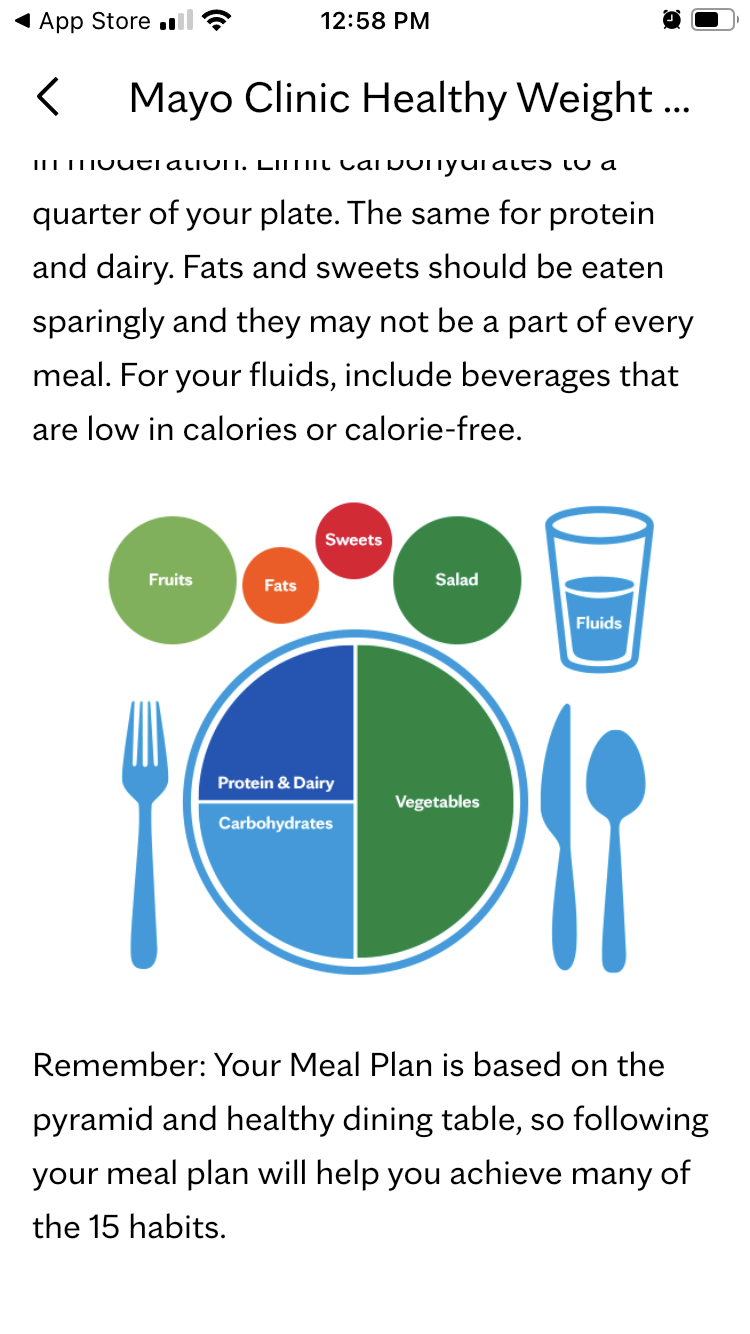
The app also gives you a workout plan to follow with exercises you can do at home using little or no equipment.
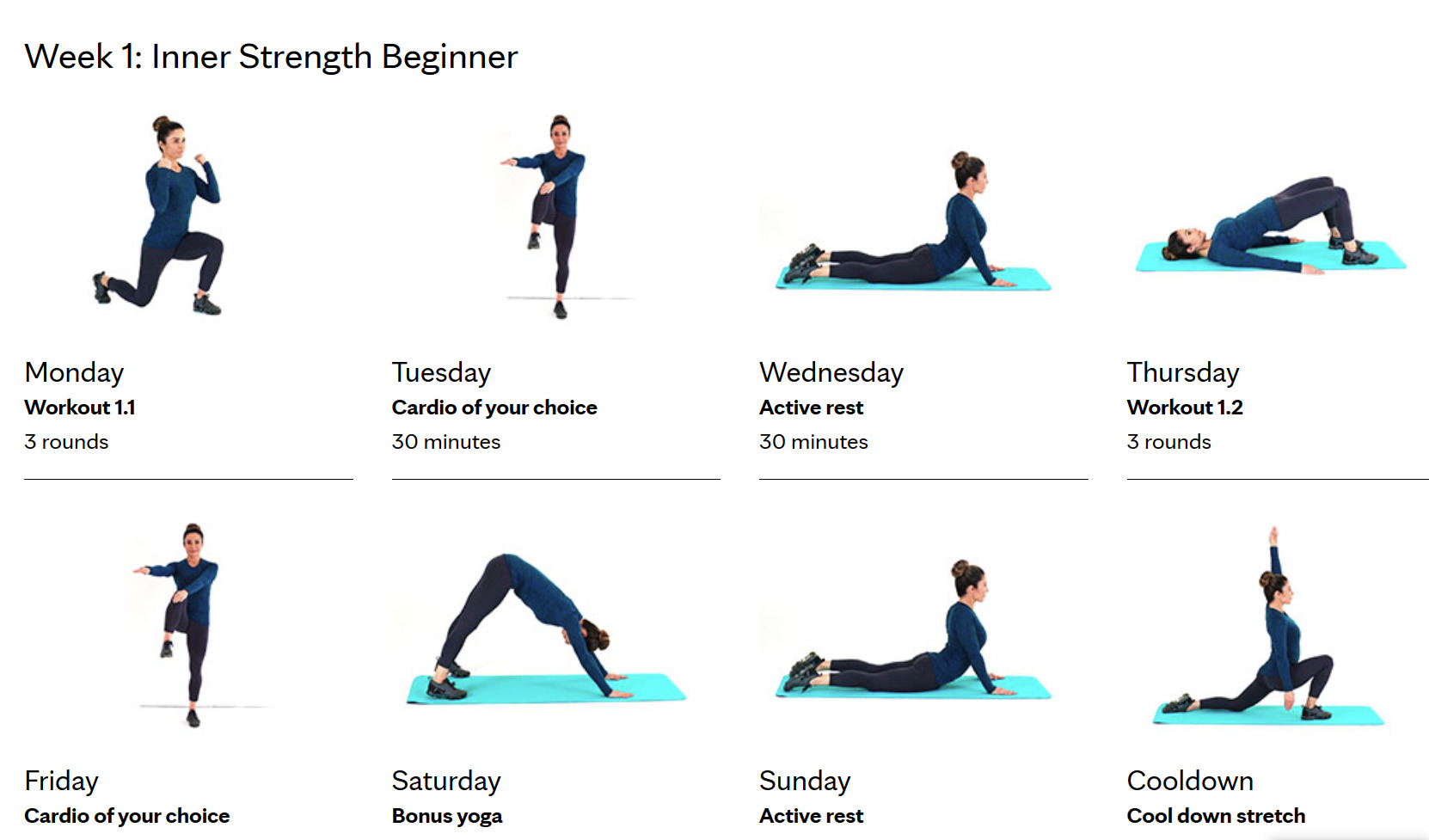
We also like the easy-to-apply nutrition content in the app, such as the picture of what our plate should look like.
Another aspect we find helpful is the Habit Optimizer, a list that lets you see which healthy habits you’re establishing and which not-so-healthy ones you can change. Some of the habits to “break” are more realistic than others—nixing TV during meals is doable, but cutting out any snack that’s not a fruit or vegetable probably isn’t sustainable for most people.
Here are the habits to “make” and those to “break” on the plan:
- Five to make: Eat a healthy breakfast, eat vegetables and fruit, eat whole grains, eat healthy fats, and move 30 minutes each day.
- Five to break: Eating while watching TV, consuming sugar or alcohol, snacking (with the exception of vegetables and fruits), eating meat and dairy frequently, and dining out (unless a restaurant meal fits into your meal plan).
- Five bonus habits: Eat ‘real food,’ keep food records, keep activity records, move 60 minutes each day, and write your daily goals.
One concern we do have is the first two weeks of the program, called Quick Start, designed to help you lose six to 10 pounds in the first two weeks. That’s more than the one to two pounds per week recommended by the USDA for sustainable weight loss.
But a person who is overweight and normally eats a high-carb standard American diet will likely lose that much weight in the first couple of weeks simply by following a healthier diet like one of the Mayo Clinic’s meal plans, which are naturally lower in carbs.
A change to a diet that’s lower in calories and carbs (even if the carbs aren’t low enough to switch your metabolism to ketosis) will result in lost water weight. After that, if you continue with the diet, you should begin to see fat loss as well.
Overall, we found the Mayo Clinic Diet to be an excellent balance of guidance from educational content, meal planning, and establishment of healthy habits, along with the flexibility to adjust your meal and exercise plan according to your preferences and goals.
From our tester
“This is a really good weight loss plan for total beginners or young folks who don’t have an education in nutrition, cooking, and staples of a healthy lifestyle.”
We recommend the Mayo Clinic Diet as a great weight loss option for anyone wanting to lose weight. It’s a particularly good choice for beginners but offers a wide range of solid benefits for everyone.
Mayo Clinic Diet
Our verdict: The Mayo Clinic Diet offers a comprehensive, science-backed weight loss program that provides all the details needed for people working to lose weight for the first time.
Noom: Best for support on a weight loss journey
You can sync Noom with your Apple Watch, Fitbit, or Garmin. It’s also compatible with iHealth, Misfit, OMRON, Polar, Qardio, Runkeeper, Withings, and YOO.
Noom is a weight loss platform that includes food and health tracking, motivational lessons, coaching, and online communities to help you reach your weight goals. We liked the slower pace of this program compared to others, with a focus on learning more about your own weight loss journey rather than just setting a goal to reach a given size. The daily lessons emphasize setting realistic goals you can reach, celebrating small successes along the way, educating yourself on healthy habits, and getting more support when you need it.
In addition to the services offered with every Noom subscription, you can add the below extras. Prices of the add-ons varies depending on your personal plan:
- Personal behavior coaching and 1:1 weekly sessions.
- Custom meal plan.
- Custom workout plan.
- Body composition scale.
Noom coaches aren’t credentialed health professionals, so they can provide motivational support but not medical or nutrition advice. We had a hard time getting timely responses from both customer service and the coaches, and multiple testers found that the customer service chat wasn’t able to answer questions.
Nevertheless, we like that this program has a greater focus on mental health as an important part of weight loss than other programs we tested. Some of the lessons seemed elementary, but we enjoyed the upbeat tone and positivity.
From our tester
“The idea of ‘just believe’ to get started on weight loss in the first week seems a bit over-simplified, but I think their premise is getting you into a positive, ‘I can do it’ mindset before tackling the daily work of food logging, weigh-ins, and exercise.”

We found the daily lessons, which you complete in a prescribed order, to be very helpful. We especially enjoyed the short course on the psychology behind weight loss and how to establish healthy habits around eating, exercise, stress reduction, sleep, and staying motivated along the way.
We also appreciated the thoughtful approach and slower start of Noom compared to other weight loss programs. Rather than jumping into food tracking and daily weigh-ins, the app took us through lessons and questions centered on why we wanted to lose weight. On day two of the program, one tester shared the following feedback:
From our tester
“I definitely sense a lot of patience coming from this program. I’ve wondered why they haven’t told me to log in meals or track water intake yet, and it’s because this program goes at a slower pace than what I’ve seen in other weight loss programs.”
However, we didn’t like the rigid categorization of foods and the calorie limits placed on each one. Noom splits foods into three colors (green, yellow, and orange) based on nutrition and calorie content, and you get a certain calorie allotment for each category. Fruits and vegetables are generally listed as green, protein is in the yellow category, and high-calorie foods, like sweets and fats, are in the orange category.
This delineation of three categories is a better system than some programs like WW, for example, which lumps everything into a system of points without explaining the nutrition behind it. We did find the calorie limit that counts down with every food you eat to be anxiety-provoking, though. The Handbook Team doesn’t recommend this system for anyone with a history of eating disorders, as the laser focus on calorie intake could exacerbate disordered eating behaviors.
From our tester
“Although Noom states that foods shouldn’t be labeled as ‘good’ or ‘bad,’ it does set up a system that separates foods. This encourages people to see them in a negative or positive light.”

Strict language regarding food intake can be risky for anyone who has a history of disordered eating or a negative relationship with food, both of which are common struggles for people who are overweight or obese.
Emily Norman, a registered dietitian with Pay It Forward Fertility, warns that this type of language is one of the red flags to avoid when shopping for a weight loss program. “A program should not make you feel shameful or guilty for your past food history, dietary recalls, or eating preferences,” she says.
Noom doesn’t provide any branded foods, which lowers the cost since those sold by other weight loss programs (such as Nutrisystem) tend to be pricey. We found the app hard to use to filter recipes according to preferences and meal type, but once we found recipes to try, we appreciated the easy ingredient list and instructions and enjoyed the final result.
Overall, we like Noom as a sustainable weight loss solution but don’t recommend it for first-timers because it doesn’t create the same educational foundation around weight loss as the Mayo Clinic Diet. We also don’t recommend it for those with a history of disordered eating.
Noom
Our verdict: Noom is a weight loss program that offers sustainable weight loss strategies with a strong focus on mental health, but it isn’t a good choice for people with a history of eating disorders.
Other weight loss programs to consider
WW (WeightWatchers)
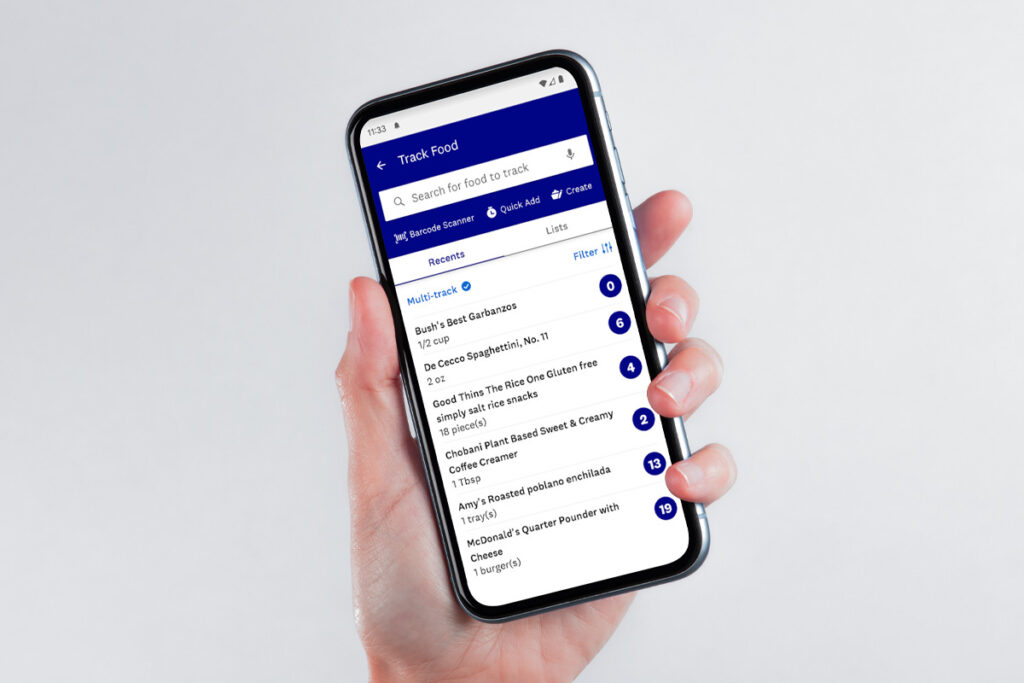
WeightWatchers is a weight loss program based on a simplified food tracking system and support offered through coaching and member groups. However, it doesn’t provide much in the way of nutrition education or tips for maintaining healthy eating habits once you end your membership.
WW pricing
You can choose from three plans with WW: The Core, Premium, or Core with weight loss medication. See below for pricing details of each plan.
| Plan Type | Starter fee | Monthly fee | Features |
|---|---|---|---|
| Core | $20 | $23 | WW app; Online community; 24/7 coaching; Educational content and recipes |
| Premium | $20 | $45 | WW app; Online community; 24/7 coaching; Educational content and recipes; In-person and online workshops; Weekly behavioral change tips |
| Core + weight loss medication | $49 consultation fee | $99 | Telehealth care provided from Health care providers through Sequence |
WW features
- Daily budget of food points based on your current height and weight, gender, age, and weight goals.
- WW app for tracking food, activity, and sleep; finding recipes; and accessing coaching and communities.
- 24/7 coaching for extra support and troubleshooting.
- Workshops and other online sessions.
- Educational content and recipes.

We found the app fairly easy to use, but it’s more cumbersome than other apps like Noom and Joggo. One advantage for people who prefer to use a computer rather than their phone is that WW has a more extensive website than, say, Noom, which is completely app-based.
We dislike the fact that points don’t correspond directly to the calorie or nutritional content of foods, and WW doesn’t provide the formula to allow you to figure out your own points for foods that aren’t in the WW database.
This makes it hard to sustain healthy eating habits outside the program. It also goes against the premise of a sustainable weight loss system like the one from Mayo Clinic, which teaches you how to craft and follow a healthy diet.
We had positive experiences with the coaching, workshops, and community groups provided through WW. But the fact that it’s hard to learn about nutrition through WW, as well as their claim that you can lose weight on the program without any exercise, leaves holes that we sought to fill through other, more comprehensive programs.
Joggo
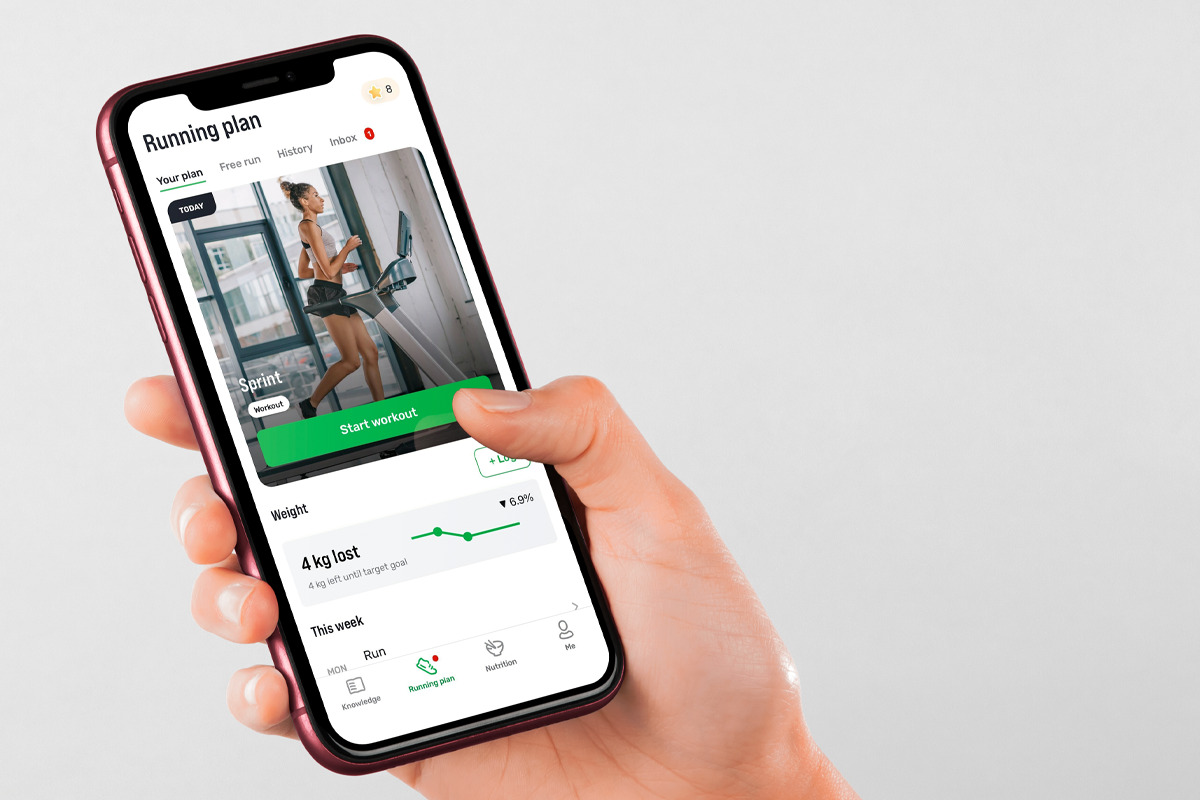
This program is primarily geared toward runners rather than people looking to lose weight, but it offers a number of features that can be helpful for weight loss. It’s also one of the most affordable programs on the market.
Joggo pricing
The monthly cost of Joggo is about the price of one fast food meal, making it a great budget-friendly option for people wanting to improve their fitness and get exercise and nutrition guidance along the way. As with most programs, you’ll save money by committing to a longer plan.
- 2-Month Running Plan: $33 ($16.50 per month)
- 4-Month Running Plan: $46 ($12.20 per month)
- 6-Month Running Plan: $66 ($10.12 per month)
Note that because Joggo focuses on fitness and running rather than weight loss, the plans are shorter (up to six months) compared to weight loss-focused plans like Mayo Clinic Diet and WW, which offer plans up to 12 months in length.
Joggo features
- Personalized running program based on your skill level and running goals.
- Meal plan with recipes and shopping lists.
- Educational content on running.
- Daily tips to help you reach your goals.
Although not a weight loss program per se, Joggo has points we really liked during testing.
- We found the app very easy to set up and use.
- The meal choices and recipes, which are mostly Mediterranean-inspired and can be adjusted to your food preferences, taste great. Also, the weekly shopping lists are helpful for planning.
- The program is tailored to your specific health goal, whether that’s losing weight, improving your fitness, or running faster or longer distances.
From our tester
“Weight loss doesn’t seem like the primary use of this app, although it does help. It feels like Joggo is best for training purposes and staying on top of nutrition as a secondary perk.”

We would like to see some improvements with this program, though. We didn’t like how you couldn’t view shopping lists until each Sunday when the new week’s meal plan appeared in the app. It also didn’t allow us to retroactively enter food intake or running data, making our log inaccurate. Finally, we’d like more flexibility in the meal plans with the option to add extra foods or customize meals based on what’s in our pantry.
What to consider about weight loss programs
Weight loss is a unique journey for every person, which means the best program for you might not be the best choice for someone else. Your lifestyle, budget, history with food and exercise, and even personality all affect which one is the best fit for you. Here’s what to think about when choosing the best weight loss program for you:
Your relationship with food
If you’re affected by an eating disorder or experience patterns of disordered eating, we suggest talking to a dietitian, therapist, or counselor who specializes in eating disorders before you enroll in any weight loss program.
If you experience feelings of guilt or shame associated with eating, it’s key to choose a program that encourages a healthy relationship with food, frequent meals rather than periods of fasting, flexible food choices, and a limited focus on calorie counting.
Also, look for a program that provides ongoing coaching for added encouragement and support. “An effective weight loss program should ideally offer behavioral support and coaching to address the emotional and psychological aspects of eating. Look for programs that provide guidance on portion control, mindful eating, and strategies to cope with emotional triggers for overeating,” says Chrissy Arsenault, a registered dietitian at Trainer Academy.
If you are currently struggling with an eating disorder or have unresolved thought patterns that negatively impact your relationship with food, seek the help of a physician, dietitian, or other qualified health care provider.
Your knowledge base
Are you familiar with nutrition, exercise, and weight loss strategies? Or do you consider yourself a beginner when it comes to weight loss? Some programs, such as the Mayo Clinic Diet, offer more education and support that can make all the difference if you’re new to weight loss.
Eating habits promoted by the program
A quality weight loss program will help you establish healthy eating habits to support you for the rest of your life. Beware of any system that teaches severe food restriction, labels foods as “good” or “bad,” or doesn’t provide a well-rounded variety of foods in your meal plan.
“Be wary of any programs that promise rapid, unsustainable weight loss or severely restrict entire food groups or certain foods,” says Arensault. “The nutrition plan should promote a focus on nutrient density and incorporate a balanced intake of carbohydrates, proteins, and fats, along with essential vitamins and minerals.”
Benefits of healthy weight loss
Bringing your weight into a healthy range helps both your body and mind. Let’s look at both types of benefits.
Physical benefits
It’s no surprise to most people that excess body weight raises the risk of many other health conditions. These include diabetes, cardiovascular disease, certain cancers, high blood pressure, stroke, and sleep apnea, among others.
The good news is that even a small weight loss, just 5 percent of your body weight, can result in marked improvements in health measures like blood glucose, triglycerides, and inflammation.These are all risk factors for the health conditions listed above, so lowering levels by losing weight also lowers your risk of the chronic diseases associated with obesity.
Psychological benefits
In addition to physical health, research shows that weight loss offers a number of benefits for mental and emotional health as well. For example, a 2014 review of clinical studies found that losing weight was linked to lower rates of depression, higher self-esteem, and improved body image. This was true of people who participated in weight loss programs both with and without exercise.
So if health issues or time constraints make it difficult to be physically active, don’t let that stop you from embarking on a weight loss journey focused on diet and behavior changes. The results for your mental, emotional, and physical health could be well worth it.
How much do weight loss programs cost?
| Brand | One month cost | Two month cost (per month) | Three month cost (per month) | Four month cost (per month) | Six month cost (per month) |
|---|---|---|---|---|---|
| Noom | N/A | $64.50 | N/A | $42.25 | $29.83 |
| Joggo | N/A | $33 | N/A | $44 | $66 |
| Mayo Clinic Diet | N/A | N/A | $39.99 | N/A | $29.99 |
| Weight Watchers | Core Plan: $43 Premium Plan: $65 | N/A | N/A | N/A | Core Plan: $15 Premium Plan: $30 |
The cost of weight loss programs varies widely based on the level of support offered, credentials of the health professionals offering that support, and whether food is provided with the program. For instance, one of the least expensive programs is Joggo with an average price of $12 per month. It’s basically an automated system with little in the way of help from real people or health experts, but if you’re comfortable with a do-it-yourself plan, this is one way to save money.
At the other end of the spectrum is NutriSystem, a weight loss program that can run up to nearly $400 per month but delivers every meal and snack to your door.
The length of membership you commit to also makes a big difference in the monthly cost for some programs. For instance, Noom charges $70 per month if you sign up for only one month, but $17.50 per month if you subscribe and pay for 12 months at a time.
Talking to your doctor about weight loss
It can be hard to bring up the subject of weight loss to anyone, including your doctor. But it’s a great idea to discuss it with them before starting any weight loss program. They may want to do preliminary blood work or run other tests before you make changes to your diet or begin exercising.
Our final verdict
Our deep dive into weight loss programs resulted in the Mayo Clinic Diet coming out on top as the safest weight loss program, especially for beginners. Noom is also a good choice for people who want to focus on the psychological aspects of weight loss and enjoy a guided, lesson-based system.
Joggo and WW both have several positive aspects, but they fell short when measured against more sustainable and educational weight loss programs like Mayo Clinic Diet and Noom.
Whether you enroll in a weight loss program or decide to get started on your own, establishing healthy habits and losing weight can have a big impact on your overall health and quality of life.
Frequently asked questions
The surest and safest way to lose weight is to combine a healthy diet that includes a variety of whole foods with a program of regular exercise. Between the calories you take in with your diet and those you burn through exercise and daily activity, you’ll need to be in a calorie deficit to see weight loss, according to the Mayo Clinic. This means that you eat fewer calories than your body is burning each day. Adequate protein and fiber intake are also important to help ward off hunger between meals; a dietitian can help you find the right protein level for your body.
The United States Department of Agriculture recommends a weight loss rate of no more than 1–2 pounds per week.
Promises of more than 2 pounds per week of weight loss, a requirement to eat only foods provided by the program, and shaming of food choices or body weight in any way are all things to avoid when shopping for weight loss programs.
- Centers for Disease Control and Prevention. (2022, May 17). Adult obesity facts. Link
- Sarwer, D. B., & Polonsky, H. M. (2016). The psychosocial burden of obesity. Endocrinology and Metabolism Clinics of North America, 45(3), 677–688. Link
- Ramìrez-Velez, R., Izquierdo, M., Kastro-Astrudillo, K., Medrano-Mena, C., Monroy-Dìaz, A.L., Castellanos-Vega, R., et al. Weight loss after 12 weeks of exercise and.or nutritional guidance is not obligatory for induced changes in local fat/lean mass indexes in adults with excess of adiposity. Nutrients. 12(8), 2231. Link
- Standard American diet. NutritionFacts.org. (n.d.). Link
- Mayo Clinic. Eating disorders. Link
- Centers for Disease Control and Prevention. Health effects of overweight and obesity. Link
- Magkos F., Fraterrigo G., Yoshino J., Luecking C., Kirbach K., Kelly S.C., et al. (2016) Effects of moderate and progressive subsequent weight loss on metabolic function and adipose tissue in humans with obesity. Cell Metabolism. 23(4), 591-601. Link
- Lasikiewicz L., Myrissa K., Hayland A, & Lawton C.L. (2014). Psychological benefits of weight loss following behavioural and/or dietary weight loss interventions. A systematic research review. 72, 123-137. Link
- Mayo Clinic. Healthy Lifestyle Weight Loss. Link
- United States Department of Agriculture. Interested in losing weight? Link









